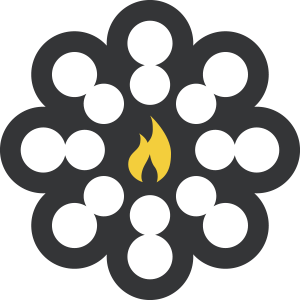Get Personal by Pairing a Journey Map with a Mode Map
Companies are so used to thinking about the customer’s experience as a journey that they miss the greatest opportunity to personalize the customer’s experience. The reality of what the customer is doing right now is the most important opportunity and with a mode map, companies can be prepared for the customer’s now.
A journey map is a linear progression chart that describes a recommended sequence of events that the customer should experience. Often, the map also shows where the company falls short in delivering the ideal experience. It’s a staple of experience design, but too many companies rely exclusively on the framework to make experience design decisions.
A mode map is a scatter-plot map that shows common modes that customers get into. A mode is a mindset and set of behaviors that people get into temporarily. Some modes are positive (beast mode, mommy mode, relax mode, yoga, and learning mode); others are negative (crisis mode, anxiety mode, juggling mode, and sad mode). The mode the customer is in not only tells the company their state of mind but often gives clues about their situation. So, if someone is in mommy mode there’s a good chance that a child is nearby.
By knowing the most important modes that customers get into when experiencing a company’s product, the strategist can make much more specific recommendations about how to customize solutions to meet their needs.
Let’s compare the two frameworks with an example. Imagine that you are watching a customer’s experience through a pair of binoculars. The lenses that magnify the experience for you are set to ‘journey map.’ Here’s what you will see:
An ideal sequence of events the customer should follow.
The actual activity that the customer does.
Gaps between what the actual experience is and the ideal sequence.
Recommendations for how to keep the customer moving in ‘the right direction.’
Now, on the side of binoculars is a toggle switch. It changes the lenses to ‘mode map’ setting. Here’s what you see:
A scatter plot 2x2 chart with the following axes: X negative to positive states; Y low performance to high performance or output.
The names of key modes that your customers get into, plotted into one of the four quadrants.
The mode the customer is currently in, highlighted.
Recommendations for how to customize the experience based on the mode the customer is in.
Is it important to customize an experience based on the ideal next step? Sure. But what creates far more value for the customer and the company is being able to customize the experience based on the mode the customer is in. If they are anxious, you can help them relax. If they are learning, you can help them learn more effectively. Of course, when they are done learning, they might choose to relax. That’s perfectly okay, especially since you know how to support relax mode. And hey, you’ll get to relax more, too, knowing you’re meeting your customers right where they are.
Join us for Experience Strategy Certification, where modes strategy is a key concept in the training.
If you want to see where our work is heading in the future, join one of our Collaboratives.




